Douro unterraced
While researching a feature on hot climate viticulture in the Douro, (which I’ll publish here later), I got fascinatingly sidetracked by the complexities of terracing systems in the valley.
There are effectively five different styles of terrace that have evolved over time, with differing issues.
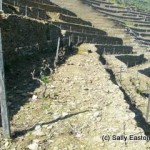
Original stone terrace
Firstly, the original stone terraces, called socalcos, with high walls and a flat vineyard surface. Vines, often just one or two rows on each terrace, are planted along the contour. Arduous to create, and extremely expense to renovate, these remain the best system to minimise erosion in the valley, which is said to be the region’s biggest problem.
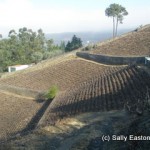
Late 19th century terrace
Secondly, an end of the 19th century development of the original vertical wall, horizontal planting surface, was the lower wall with sloping vineyard surface. Vines are still planted along the contour. Rui Cunha, of Secret Spot Wines explained “these are bigger terraces, with a shallow slope and small wall, which allowed more rows of vines. These terraces allowed the first mechanisation – with mules and horses to plough.” With the higher density, said Tiago Alves de Sousa, of Quinta da Gaivosa “there is more competition for the soil, so vines need deeper roots. And the vines are not so vigorous, so they stay compact, and [therefore] use less water”, which is a seriously precious commodity in the Douro. Alves de Sousa added “on the other terrace types, you need to be more interventionist to manage the canopy.”
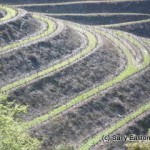
Two-row patamares
Thirdly, in the 1980s, the two-row patamares was developed. More economical earth banks were built instead of vertical stone walls. This allowed the mechanisation of many vineyard operations. Vines are planted along the contour. These are generally regarded as the worst type of system and have not been constructed for around 20 years. The unsupported earth banks are liable to suffer erosion. Earth patamares also tend to be quite long, so the same grape varieties are planted with different expositions along the length of the patamares, which results in differing ripening times. With these, said Cunha “the earth slope [created] a higher wall than the original terraces. And the two rows gave irregular maturity. You had the hot sun on the outside row and higher humidity on the inside row.”
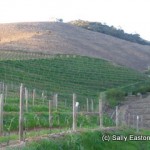
One-row patamares
Fourthly, the narrow, single-row patamares is the modern expression of the two-row patamares. With only one row of vines, there is enough room between the vine row, planted along the contour, and the base of the earth bank for small machinery to pass. However the erosion issue is not addressed with this system. Above around a 35% slope, this is the modern model for Douro vineyards. The vines “are planted away from the outer edge to protect from the sun. But the density is very low” said Cunha.
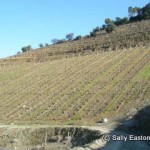
Vertical planting
Fifthly, the ‘up and down’ or vertical system, is where vines are planted up and down the slope, rather than along the contour. This system is limited to slopes of less than around 35%. It is more efficient because there are no earth embankments taking up valuable slope surface, so vine density is higher than patamares. Erosion remains a risk on higher gradients, as does the ability to successfully operate tractors. Alves de Sousa said this system is “better than the terraces with earth banks because you don’t lose so much ground. There is greater density but some erosion.”
Apart from the erosion issue, which is most successfully dealt with using the original system, vine density and exposition are other issues. Although, said António Magalhães, viticulturist for the Fladgate Partnership “the question of the system is a question of economics [and slope]. We plant all the systems.” They need different management strategies to deal with manifold differences in altitude and exposition in a mountain environment, as well as the ripening requirements of different grape varieties. José Manso, the viticulturist for Sogevinus said simply “What I do at the top I don’t do at the bottom. I do on one side, but not the other; I do in one month, but not the next.”
My research visit to the Douro was sponsored by the ‘Discover the Origin’ campaign.



